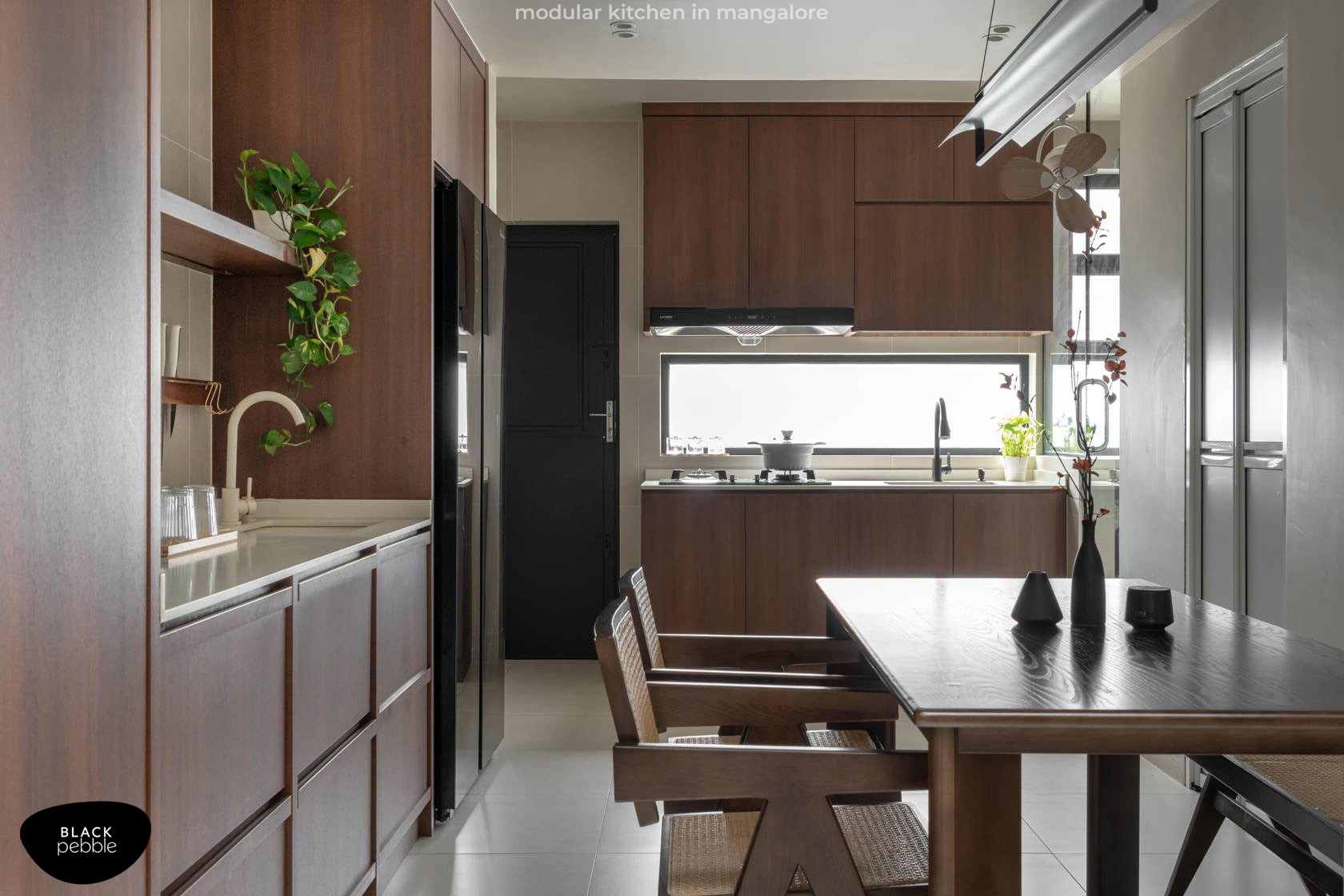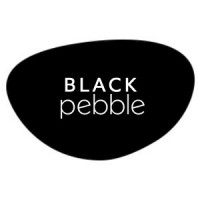Designing Kitchens in Coastal Regions: My Insights from Mangalore Homes

Strong 8k brings an ultra-HD IPTV experience to your living room and your pocket.
As an interior designer working and living in Mangalore, the heart of Karnataka's coastal belt, I’ve come to deeply appreciate the unique dynamics that come with designing homes here—especially kitchens. The kitchen is the most hardworking space in any Indian home. But in coastal towns like ours, it has to battle not just the heat and the hustle, but also the relentless humidity, salty air, and seasonal monsoons.
Over the past few years at Black Pebble Designs, I’ve had the opportunity to design kitchens across various pockets of Mangalore—from modern apartments in Kadri and sea-facing villas in Panambur, to heritage homes in Bejai and compact flats in Surathkal. Each project posed its own set of challenges, but with those came learnings that now form the backbone of how I approach coastal kitchen design.
Why Coastal Kitchens Need a Different Design Mindset
When designing kitchens in Mangalore and other coastal towns, it’s not enough to focus on aesthetics alone. Materials and finishes need to be chosen not just for how they look, but for how they’ll perform under high humidity, salt-laden winds, and sudden downpours.
Common challenges we deal with in Mangalore:
- High Humidity: This causes wood to swell, laminate to peel, and adhesive bonds to weaken over time.
- Salt in the Air: Corrodes metal fittings, appliances, and even some types of wall paint
- Mold and Mildew: Persistent issues, especially during the monsoon months.
- Ventilation Woes: Traditional homes often lack sufficient airflow in kitchens, leading to heat buildup and odour retention.
These factors demand thoughtful choices in materials, finishes, layout, and ventilation strategies—lessons I’ve learned through both trial and experience.
Case Study 1: The Bejai Bungalow – Where Tradition Meets Technology
This project was close to my heart—a sprawling Konkani family bungalow in Bejai. The family still followed traditional cooking methods: making coconut-based gravies from scratch, fermenting idli batter, and sun-drying spices on the terrace.
Challenges:
- The original kitchen had no chimney, and the wooden cabinets had warped from years of exposure to steam and oil.
- There was minimal cross-ventilation.
Design Interventions:
- We retained the traditional layout but upgraded all cabinetry to BWP-grade marine plywood with PU-matte finish shutters, which can handle steam and occasional splashes without bubbling or fading.
- For hardware, we used SS304 stainless steel fittings and brass handles, both resistant to rust.
- Ventilation was addressed by breaking a wall to install louvered windows, along with a high-suction Faber chimney that complemented the old-world look.
- The backsplash was done in handmade terracotta tiles, locally sourced and sealed to resist moisture. They added both durability and a grounded, earthy feel that tied back to the home’s roots.
Today, the kitchen is a warm, functional space that still smells of curry leaves and ghee, but feels fresh and well-ventilated year-round.
Choosing the Right Materials: What Works in Mangalore Kitchens
Through our coastal projects, some clear favourites have emerged in terms of materials and finishes. Here’s what we swear by:
✅ Cabinets & Carcasses:
Marine Plywood (BWP Grade): Resists moisture swelling far better than MDF or particle board.
Aluminium Profiles with Glass: Especially effective in utility areas and wet zones. I often use these for under-sink storage and wall-mounted units.
✅ Finishes:
PU Paint or Acrylic Laminate: These are easy to wipe clean and more stable than standard laminate in fluctuating humidity.
Textured Laminates: Matte textures show fewer fingerprints and hide minor water marks better than high gloss.
✅ Countertops:
Quartz: My top choice for coastal kitchens. Unlike granite, it doesn’t absorb stains easily and is more uniform.
Nano White (for premium homes): It looks stunning in natural light but needs regular cleaning to stay crisp.
✅ Hardware:
Stainless Steel 304 Grade: Ideal for drawer channels, hinges, and handles.
Soft-close accessories: Help avoid long-term wear and tear in high-use kitchens.
Case Study 2: Compact Sea-Facing Kitchen in Panambur
This was a small 2BHK apartment overlooking the Arabian Sea—a young couple’s first home together. They wanted a clean, minimal kitchen that wouldn’t feel cramped or suffer from corrosion over time.
Key Issues:
- The salt-laden wind had already corroded the microwave trim and window grills within the first year.
- Space was tight, and they needed a dry and wet zone separation.
Design Highlights:
- We installed powder-coated aluminium shutters for the base cabinets and frosted glass wall units—both choices known for resisting rust.
- A compact quartz countertop with a drop-in sink made cleaning easy.
- We created a tall appliance unit with ventilation grilles so heat could escape and moisture wouldn’t build up.
- A small breakfast counter doubled as prep space, with concealed drainage channels to manage utensil drips.
The entire kitchen was finished in white and dove grey, with warm wood accents to soften the modernity. It still looks as pristine as it did on handover.
Ventilation and Lighting: Non-Negotiables in Coastal Kitchens
If there’s one thing every coastal kitchen needs, it’s airflow. Stale air and humidity are enemies of both health and design.
Ventilation Tips:
- Always include two opposite openings (window + chimney or exhaust) for cross ventilation.
- In closed apartments, ceiling-mounted exhaust fans or ducted chimneys can help.
- In luxury homes, skylights and vent blocks (jali screens) are great for bringing in light while letting air flow.
Lighting also plays a role in creating a mold-free, inviting space. In a home in Kavoor, we installed LED strips inside cabinets, motion-sensor lights under the counter, and a central pendant above the island—creating a bright, low-maintenance kitchen that the client loved.
Local Sourcing and Labour: The Mangalore Advantage
One of the perks of working in Mangalore is access to skilled local carpenters and tile craftsmen who understand our climate and traditions. Whether it's creating carved jali panels or installing laterite cladding in utility balconies, local hands bring a finesse and contextual wisdom that factory-made modules often lack.
We also source many finishes locally—from Moodbidri terracotta to Udupi teak laminates, which adds both a sustainable and cultural touch to our kitchen projects.
Final Thoughts: Kitchens That Withstand Salt, Steam & Time
Coastal kitchens are more than just functional cooking areas—they are spaces that reflect the rhythm of the sea, the strength of local materials, and the warmth of shared meals. Designing them requires a balance between beauty and durability, and an understanding of how climate and culture come together.
At Black Pebble Designs, we approach every kitchen with empathy, precision, and deep respect for its coastal context. Whether you’re building a new home in Bondel or renovating an old one in Jeppu, know that a well-designed kitchen doesn’t just survive the coastal weather—it thrives in it.
If you’re planning your dream kitchen in or around Mangalore, I’d love to hear your ideas and help you bring them to life—coast-proofed, thoughtfully crafted, and uniquely yours.
Kshema Rai
Founder & Principal Designer
Black Pebble Designs | Mangalore
Note: IndiBlogHub features both user-submitted and editorial content. We do not verify third-party contributions. Read our Disclaimer and Privacy Policyfor details.


